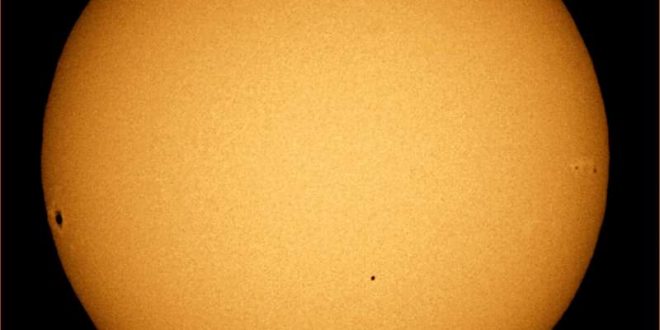On 9 May there will be a rare transit of Mercury, when the smallest planet in our solar system will pass directly between the Earth and the Sun.
With suitable observing equipment Mercury can then be viewed as a small black dot crossing the face of the Sun over a period of several hours. All observers are advised that it is NEVER safe to look at the Sun without proper eye protection. Failure to use proper observing methods can result in permanent eye damage and severe retinal loss.
Transits of Mercury can only occur in May or November, and occur on average approximately 13 times per century. Apart from offering better weather prospects (the Sun is more likely to be visible in May than November!), May transits also have the advantage that Mercury lies close to the farthest point of its elliptical orbit around the Sun. As a result, Mercury is slightly closer to Earth during a May transit and so appears slightly larger, by some 20%, against the solar disc than during a November transit.
There was a transit of Mercury visible from North America in November 2006.
Interestingly, our knowledge of this small planet has increased manifold since the 2003 transit owing to its coming under close scrutiny by NASA’s “Messenger” probe, the first spacecraft to orbit Mercury, between 2008 and 2015. Mercury is also due to receive its next visitor in 2024 when “BepiColombo”, a joint mission between the European Space Agency (ESA) and the Japanese Aerospace Exploration Agency (JAXA), now scheduled for launch in 2017, will be inserted into orbit around the planet and make scientific measurements during a one-year nominal mission.
Little planet
May 9, 10:25 a.m. — 2:44 p.m.
Agencies/Canadajournal
 Canada Journal – News of the World Articles and videos to bring you the biggest Canadian news stories from across the country every day
Canada Journal – News of the World Articles and videos to bring you the biggest Canadian news stories from across the country every day



